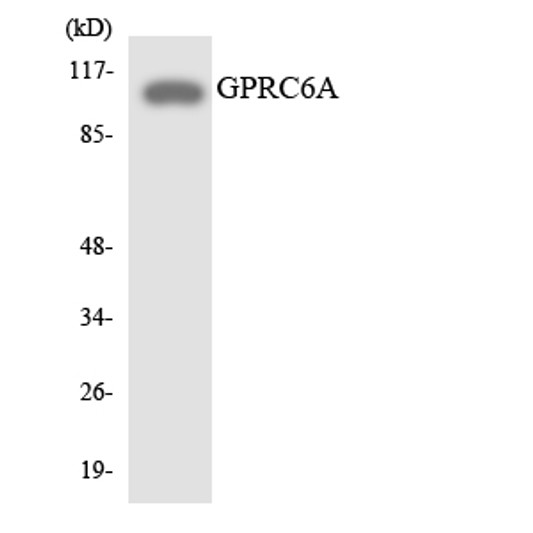| Function | Receptor activated by multiple ligands, including osteocalcin (BGLAP), basic amino acids, and various cations. Activated by amino acids with a preference for basic amino acids such as L-Lys, L-Arg and L-ornithine but also by small and polar amino acids. The L-alpha amino acids respond is augmented by divalent cations Ca(2+) and Mg(2+). Seems to act through a G(q)/G(11) and G(i)-coupled pathway. Regulates testosterone production by acting as a ligand for uncarboxylated osteocalcin hormone: osteocalcin-binding at the surface of Leydig cells initiates a signaling response that promotes the expression of enzymes required for testosterone synthesis in a CREB-dependent manner. Mediates the non-genomic effects of androgens in multiple tissue. May coordinate nutritional and hormonal anabolic signals through the sensing of extracellular amino acids, osteocalcin, divalent ions and its responsiveness to anabolic steroids. |
| Protein Name | G-Protein Coupled Receptor Family C Group 6 Member AHgprc6aG-Protein Coupled Receptor Gpcr33Hgpcr33 |
| Database Links | Reactome: R-HSA-416476Reactome: R-HSA-420499 |
| Cellular Localisation | Cell MembraneMulti-Pass Membrane Protein |
| Alternative Antibody Names | Anti-G-Protein Coupled Receptor Family C Group 6 Member A antibodyAnti-Hgprc6a antibodyAnti-G-Protein Coupled Receptor Gpcr33 antibodyAnti-Hgpcr33 antibodyAnti-GPRC6A antibody |
Information sourced from Uniprot.org













